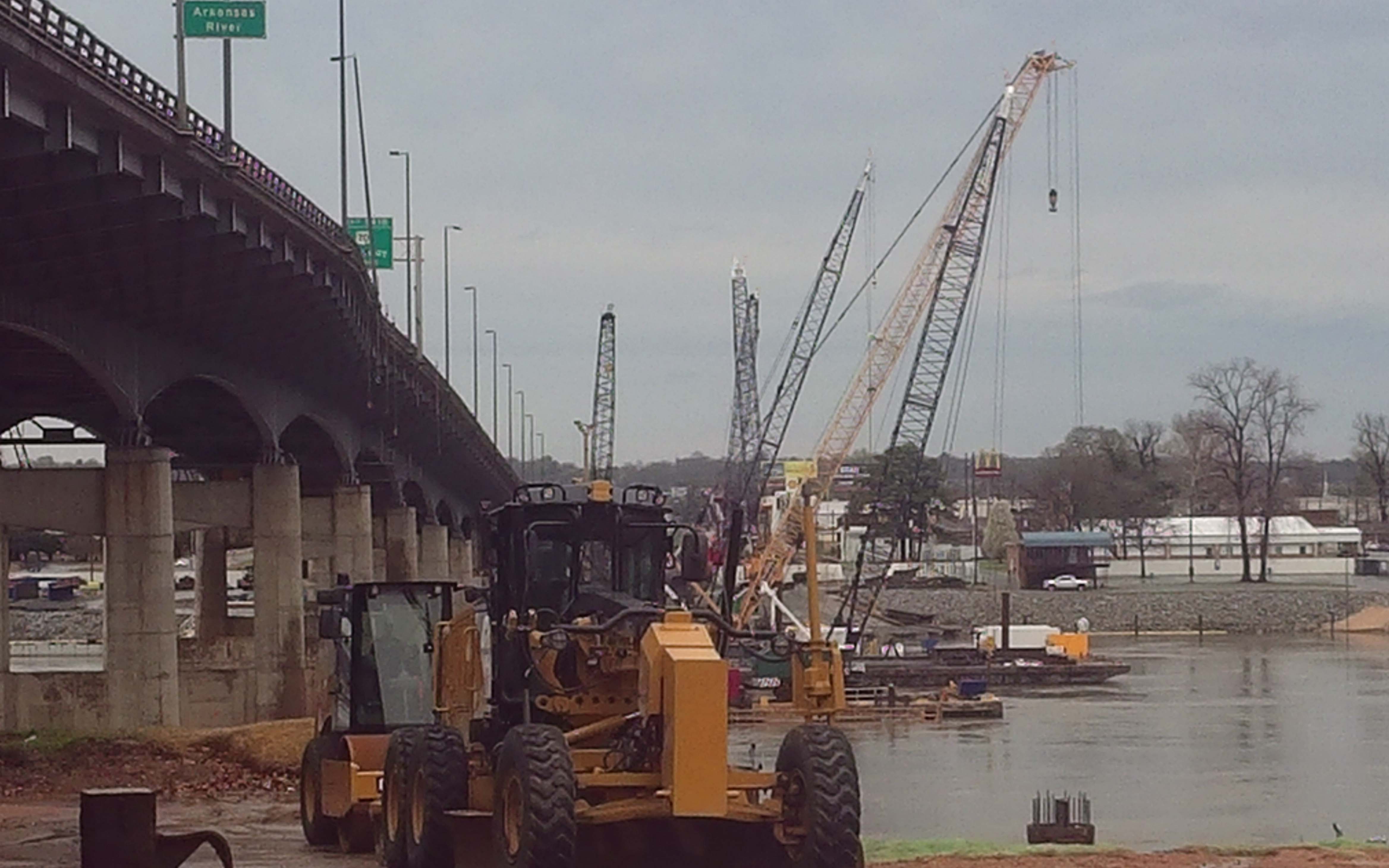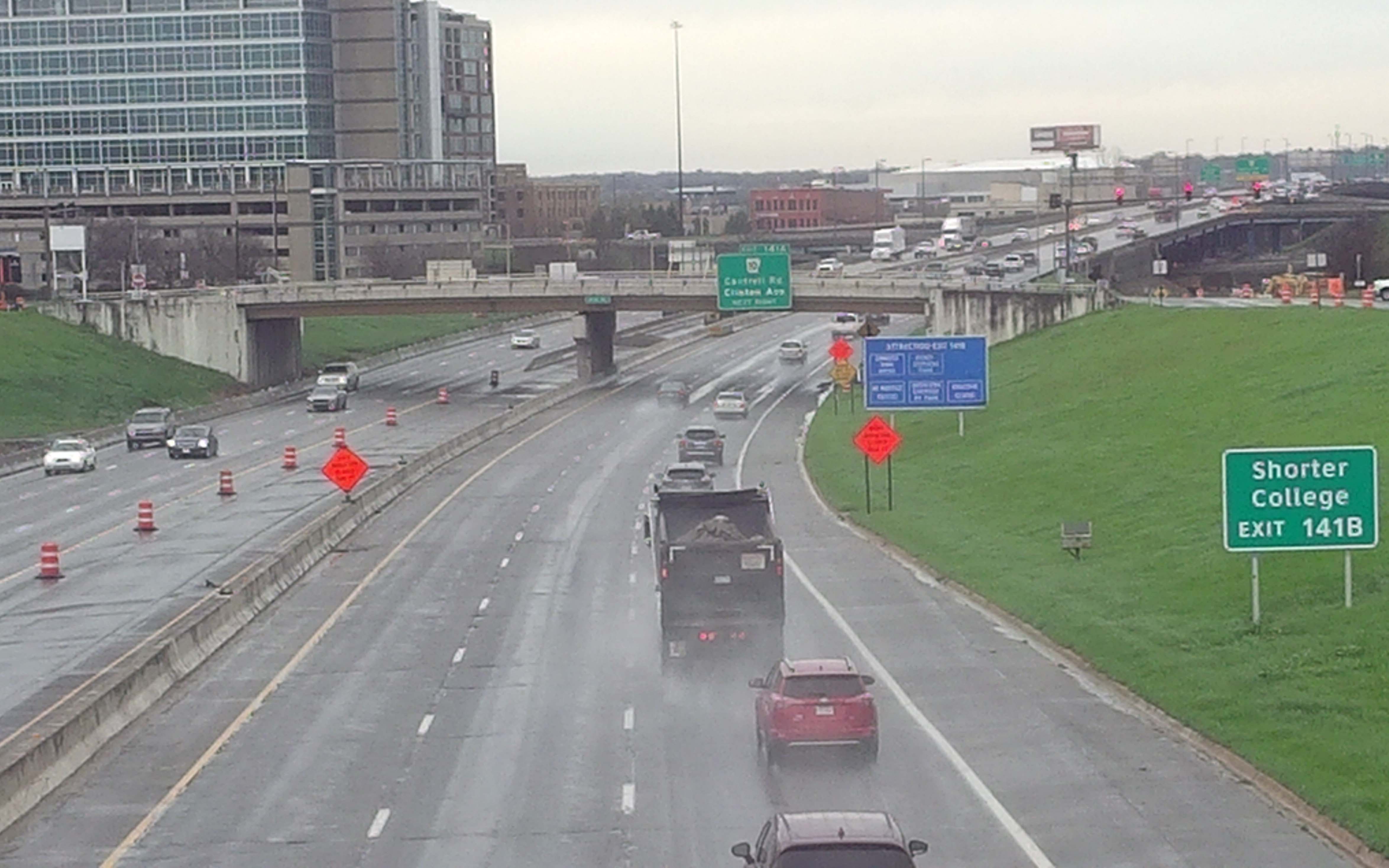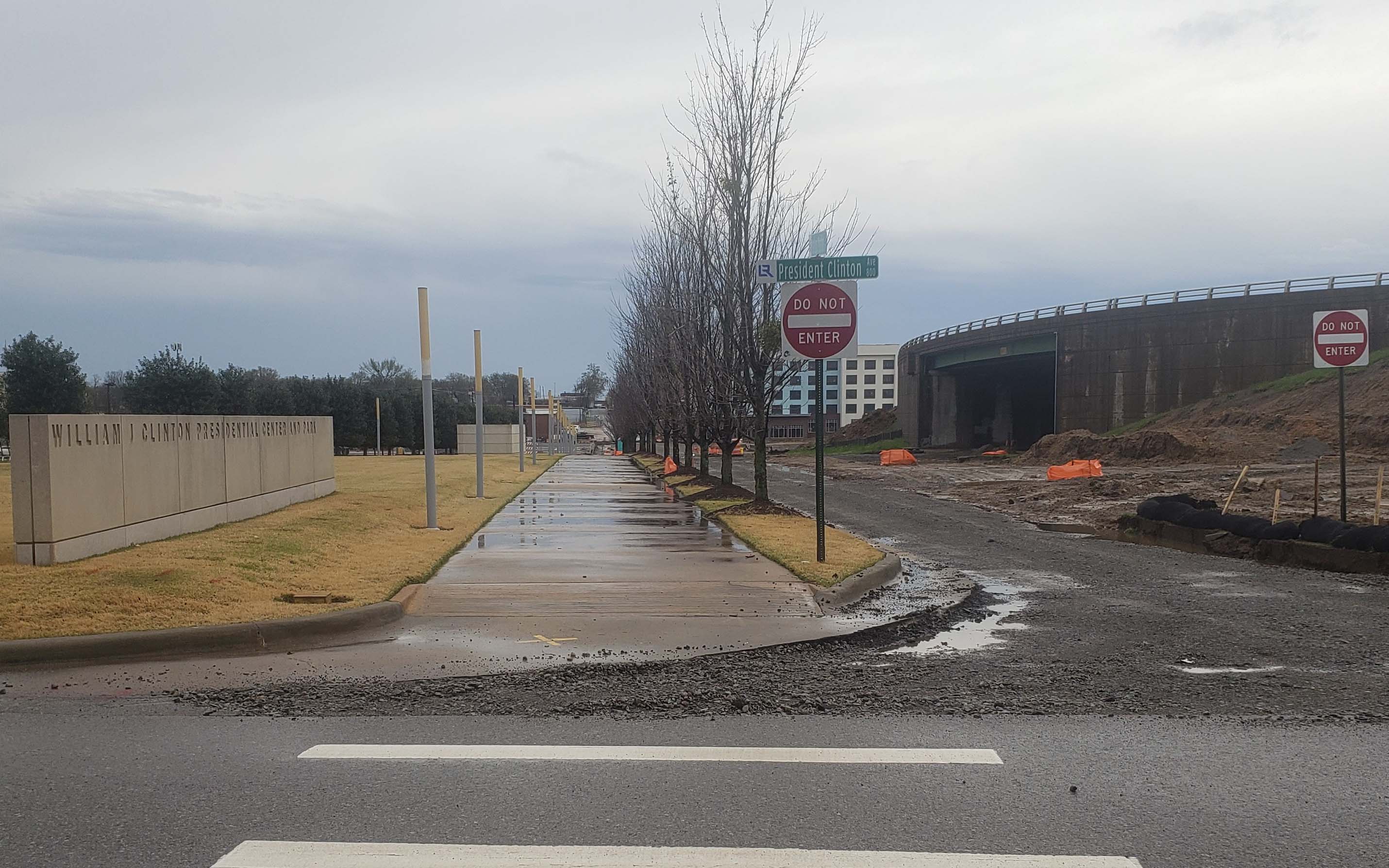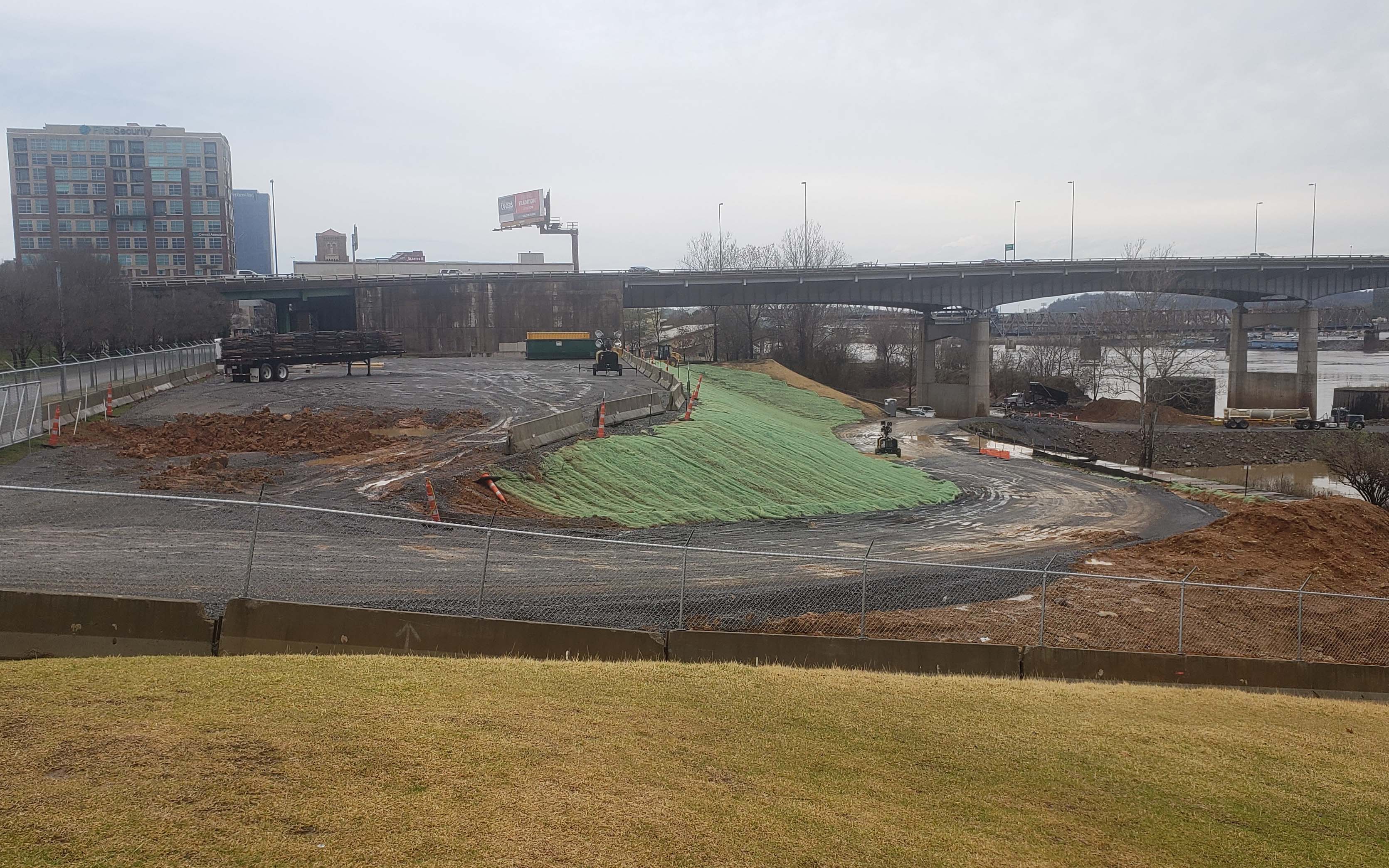I-30 Crossing project picks up speed as state highway officials release new traffic routes
March 22-28, 2021
By Wesley Brown
Arkansas motorists traveling in the downtown area near or along Interstate 30 (1-30) should expect some traffic snarls for the foreseeable future.
The Arkansas Department of Transportation (ARDOT) officials said last week that new traffic patterns are being scheduled along the I-30 corridor in Little Rock for late March and early April. The local traffic gridlock is part of the ongoing construction of the I-30 Crossing project, the controversial $1 billion downtown project that is widening a 6.7-mile section of the interstate through downtown Little Rock and North Little Rock. The project is expected to be completed by late 2024 or early 2025.
The Pulaski County project is part of the statewide Connecting Arkansas Program (CAP), the largest highway construction program ever undertaken by ArDOT. In 2012, through a voter-approved constitutional amendment, the people of Arkansas passed a 10-year, half-cent sales tax to improve the state’s intermodal transportation system, including projects that widen and improve approximately 200 miles of highways and interstates.
The 30 Crossing project consists of reconstructing the existing six-lane I-30 roadway while adding two decision lanes in each direction that ultimately feed into the collector and distributor lanes located at the I-30 Arkansas River Bridge. A split-diamond interchange will be used to distribute traffic onto the downtown road network.
According to ArDOT officials, the 30 Crossing corridor through downtown Little Rock consists of infrastructure that is over 50 years old and at the end of its useful life, including the Arkansas River Bridge which has been classified as “functionally obsolete, structurally deficient, and fracture critical in its design.” In addition to these infrastructure deficiencies, congestion and mobility concerns on this corridor have been reported by Metroplan since as early as 2002.
The multi-year construction project includes improvements to I-30 and I-40 but does not snake any major improvements to I-630. State highway officials, however, have said that traffic modeling determined that additional improvements on I-630 from Louisiana Street west beyond may be needed by 2041 to avoid backups from congestion impacting traffic and safety on I-30.
In public meetings going back to as early as 2016, ArDOT officials have said the project would increase the safety of vehicular traffic on I-30 and I-40 by correcting geometric deficiencies. It will also improve the condition of the roadway by modernizing infrastructure and maintaining a state of good repair, improve navigational safety on the Arkansas River, correct the I-30 Arkansas River Bridge deficiencies, and reduce traffic congestion by improving mobility on I-30 and I-40.
“The intent of the project improvements is to provide a reliable transportation corridor between Little Rock and North Little Rock that is structurally sound and improves safety and mobility by improving the operations of the multiple interchanges in the corridor,” ArDOT said in the statement on a dedicated 30Crossing.com website. “The I-30 Arkansas River Bridge will be replaced with a new structure, correcting the functional and structural deficiencies and navigation safety issues.”
The historic construction project officials got underway in January 2019 when the five-person Arkansas State Highway Commission approved the selection of Kiewit Massman Construction (KMC) to design and head construction of the 30 Crossing project. Headquartered in Kansas City, Kan., KMC was one of six design-build teams to respond to Request for Qualifications in June 2017. After respondents were short-listed, requests for bids were released in September 2018. Two short-listed teams provided proposals in December 2018.
After evaluating the proposals, which included design, construction methods, third-party coordination, and an optimization and refinement plan, ARDOT moved forward into a design-build agreement with KMC. The team includes lead designer Burns & McDonnell Engineering and lead quality assurance firm Volkert.
The first phase of the 30 Crossing project, which began in September, is expected to be delivered using the “design-build to a budget” delivery method, state highway officials said. That method will maximize the amount of project scope that can be delivered under the existing available funding of $631.7 million. The remaining scope of the 30 Crossing project will be delivered under future projects as funding becomes available.
Besides alleviating congestion in the downtown corridor and the construction of a new bridge over the Arkansas River, state Highway Department officials have also stated in public meetings that connect bicycle and pedestrian-friendly trails on the I-30/1-40 system and accommodate current and future transit needs.
Once construction has been completed, the mammoth construction project would also provide an area of revitalized green space in downtown Little Rock by removing the existing Hwy. 10 Interchange and elevated spur from I-30 to Cumberland Street. Those improvements will enhance “the viewshed” in downtown Little Rock and provide 15.7 acres of green space, ArDOT officials said.
* * * *
Supreme Court Snag
According to a primer by the state Highway Department, the project is funded with both federal and state funds based upon a $631.7 million-dollar budget. The federal funds are National Highway Performance Program (NHPP) funds making up approximately 29% of the budget. The state funds consist of match funds for federal funding that are approximately 7% of the budget and CAP funds that make up the remaining 64%.
However, shortly after construction on the project began in September, the Arkansas Supreme Court ruled that state highway officials could not use Amendment 91 funds for the I-30 project. Known as Issue 1 on the November 2020 ballot, the amendment added a provision to the Arkansas Constitution that permanently extends the half-cent sale tax first approved by voters in 2012. That tax was set to expire in 2023 but will now continue in perpetuity.
The tax was estimated to provide $205 million annually for state highways and $87 million split between cities and counties. It would not apply to groceries. Legislators also last year raised $95 million for highways and $13 million each for cities and counties through a 6-cent tax increase on diesel fuel, a 3-cent increase on gasoline, an increase in electric and hybrid vehicle registration fees, and casino revenues.
Those measures were all supported by Gov. Asa Hutchinson, who made highway funding one of his main issues during his 2018 re-election campaign and who campaigned for Issue 1. The proposal was also backed by the Arkansas State Chamber of Commerce and the Good Roads Foundation, which released a study detailing the economic impact of increased spending on Arkansas roads and highways. That 2018 report, conducted by the American Road and Transportation Builders Association (ARTBA), found an additional annual investment of $478 million needed to maintain and preserve Arkansas’s existing highway system would result in a statewide economic impact of at least $1.3 billion while creating 5,729 jobs throughout all sectors of the state’s economy.
In backing the highway tax referendum on the November 2020 ballot, the five-person State Highway Commission that oversees ArDOT and state highway operations stressed that the passage or failure of Issue 1 at the polls in November would have no impact on the 30 Crossing work. The Commission reiterated that stance in October after the ruling by Arkansas’ highest court, just one week before the election.
“While we respect the Arkansas Supreme Court’s ruling regarding Amendment 91 funds as they relate to the Interstate 630 and 30 Crossing projects, the decision itself is a disappointing one,” said ArDOT, led by longtime Commission Chairman Robert Moore, a former Arkansas Speaker of the House appointed the highway regulatory panel in 2013. “We will now work with our co-defendants to determine how to advance regarding this case. This ruling emphasizes now, more than ever, the need for flexibility in funding dedicated to improve the state’s roads and bridges.”
“30 Crossing is an important improvement that was promised in 2012 to Arkansas voters. The AHC and ARDOT will begin investigating alternative ways to fund this project consistent with the Supreme Court’s order,” ArDOT concluded on Oct. 29. State Highway officials did not immediately respond to a request comment from The Daily Record concerning the project’s ongoing funding and future budget needs after the state high court ruling.
Meanwhile, the most recent traffic reroutes, and lane closures will be necessary during I-30 Crossing construction to allow for the safe and efficient implementation of the project, highway officials said. Partial closures are expected throughout the project during off-peak hours. During periods of peak travel, the goal will be to maintain two to three lanes of travel in the peak direction, as much as possible.
In the future, full closures along portions of the corridor may be necessary but will be short-term in duration. The frequency of occurrence of full closures will be minimized to the extent possible. The public will be notified of these closures in advance through news releases and variable message signs. Possible nearby detour routes within the project area will be suggested so that the public can avoid congestion potentially resulting from the lane closures. Ramp closures and closure of more than one cross street or frontage road intersection at the same time will also be minimized.
Over the next several weeks, state Highway Department officials said a noticeable uptick in traffic pattern changes will occur, weather permitting. Drivers should exercise caution when approaching and traveling through all highway work zones. According to ArDOT, the I-30 passageway through downtown Little Rock and North Little Rock is the highest volume corridor in the State with 120,000 vehicles per day. Below are the upcoming traffic changes.
Late March | 2nd Street | Full street closure between River Market and Rock Street. Street parking will be impacted. Detour route will be in place. Closure expected to last several months.
Early April | Collins Street | A new section of road will open, connecting Collins Street between 3rd and 4th Streets.
Early April | I-30 eastbound | Traffic lane shift between 6th and 3rd Streets.
Additional details will be available prior to the start dates. A long-term and permanent travel impact interactive map is available at https://connectingarkansasprogram.com/, along with additional project information. Additional travel information can be found at IDriveArkansas.com or ARDOT.gov. Arkansas motorists and drivers traveling through Arkansas can also find information on construction delays and detours on Twitter @IDriveArkansas for traffic and @myARDOT for everything else.
PHOTO CAPTIONS: (Photos by Daily Record Staff)
Construction on the 1-30 Crossing project in downtown Little Rock is rerouting traffic throughout the downtown area, including in and around the Clinton Presidential Library.
Construction picks up steam on the controversial I-30 Crossing project to replace Arkansas River bridge and widen a 6.7-mile section of interstate through downtown area.
The mammoth development that will replace the Arkansas River bridge is the largest construction project in the state's history.
The Arkansas Department of Transportation has issued several alerts asking motorists to exercise caution and patience when approving and traveling through highway work zones for the 1-30 Crossing project.






